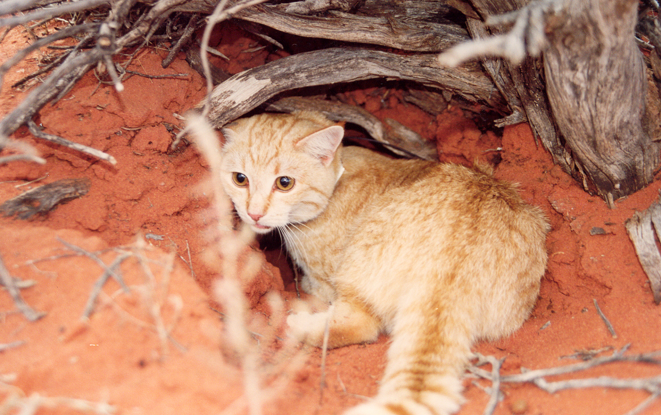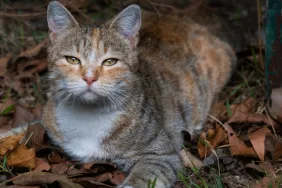Dedicated cat lovers across the country are saving cats lives by giving care to colonies of feral cats and using a process called Trap-Neuter-Return, or TNR for short.
What Are Feral Cats?
Feral cats are the cats that live outside without a human-home to return to when the day’s work and play is done. Or, more properly stated, the outdoors is their home.
They are the same species as domestic (pet) cats, but they have not been socialized to human beings because they have had no, or at least very little, contact with humans, especially as kittens. They do not make good adoption candidates because of the lack of socialization, though it may be possible to socialize very young feral kittens and put them up for adoption if they can get enough human contact.
Sometimes feral cats are also referred to as free-roaming cats or community cats, though those terms are a bit broader, including tame cats who have become stray, cats who are “owned” but are allowed to roam, and others who spend time outdoors but are not truly feral. This article focuses primarily on feral cats, but occasionally used the other terms as well.
Problems Caused by Unmanaged Feral Cats
Cats who are not spayed or neutered and live outdoors can drive some people bonkers. They fight, yowl, go into heat, chase each other and take up residence where uninvited.
Many humans also are under the impression that feral cats spread disease (they don’t) and kill inordinate amount of songbirds (again, this has not been proved, but the myth persists).
The ruckus the cats create or the other perceived problems drive some people to call the local animal control agency and complain, even demanding that the cats be killed, though polling shows that most people (81%) do not support killing feral cats. And, in some cases the disturbed individuals take matters into their own hands by shooting, poisoning, or otherwise killing the cats.
Impact of Feral Cats on Animal Shelters
Currently, only 2% of free-roaming cats are spayed and neutered (compared to 85% of pet cats) and thus the outdoor cat population reproduces on a regular basis. Some estimate that while 33 million kittens are born a year to pet cats, a whopping 147 million kittens a year are born to the free-roamers. Many of these cats will wind up in animal shelters and most will be euthanized.
Across the country, 70% of cats entering animal shelters are euthanized (25,000 per day). So, each birth increases the competition and decreases the chance for adoption. The obvious conclusion is that spaying and neutering free-roaming cats in large numbers will make a dramatic difference for a shelter cat’s chance of being adopted.
Trap and Kill Does Not Work
Until the 1990s, the only “solution” for noisy feral cat colonies was to have them trapped and killed. But, trap and kill is only a temporary fix. Feral cat populations react to the deaths of their members much like some wildlife populations (coyotes, mountain lions). When the size of the population starts to decrease, other members of the species move in or reproduction rates increase so that the population goes right back to where it started. In effect, the killing creates a vacuum that sucks in more feral cats or causes more to be born, only to start the cycle of trap and kill over again. But, there is a solution.
Read Trap-Neuter-Return: Part II
Read Trap-Neuter-Return: Part III









